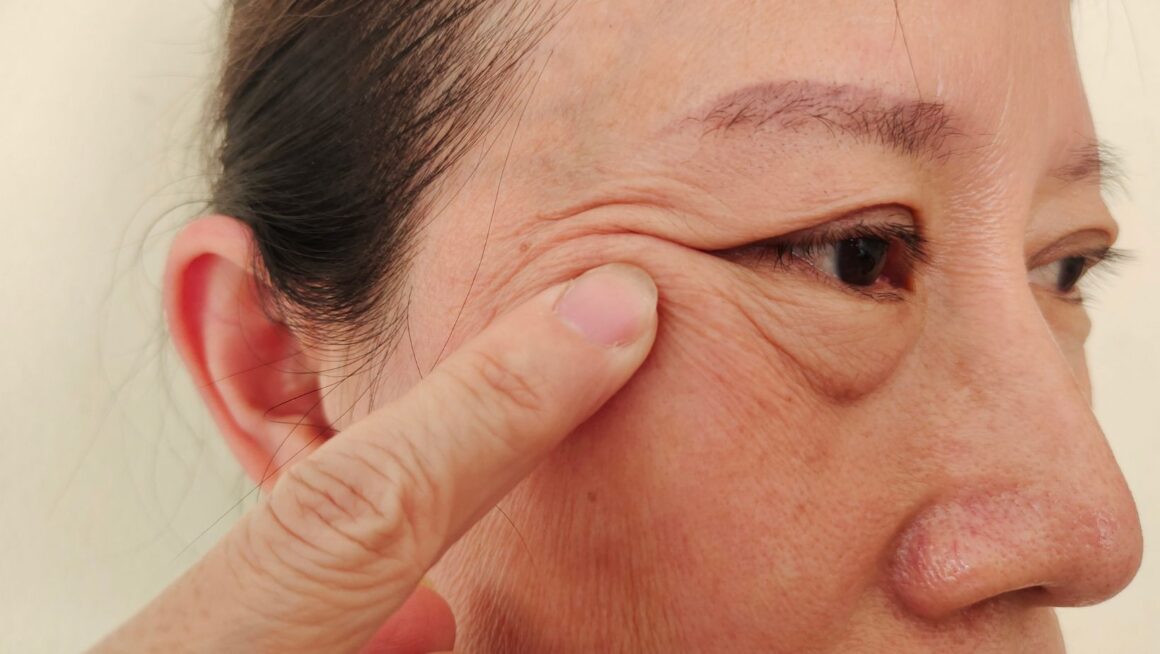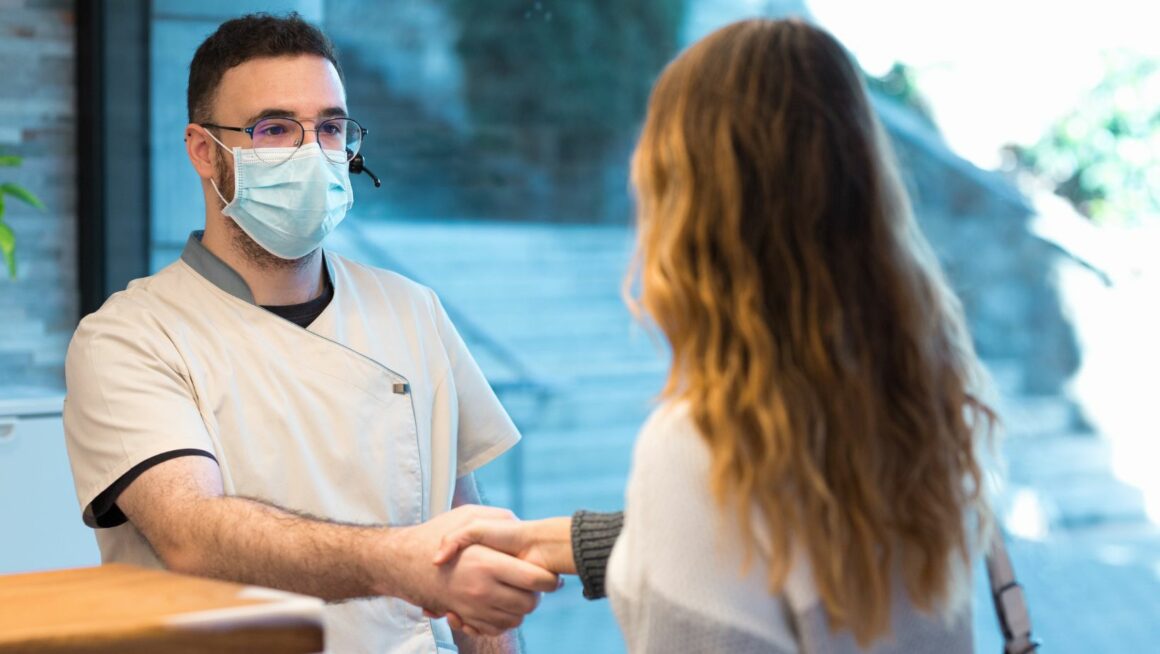Medically, droopy eyelids are known as ptosis. It is a complicated condition where one or both upper eyelids sag or droop lower than they should.
This can occur in one eye or both eyes and may be present at birth (congenital ptosis) or develop later in life (acquired ptosis). While many people only seek treatment to fix droopy eyelids because the eyelids are a cosmetic concern, droopy eyelids can also impact your vision. On this page, we explain the basics you may find helpful if you have droopy eyelids.
What Does a Droopy Eyelid Indicate?
If you have droopy eyelids, a common question that may persistently linger in your mind is: what does a droopy eyelid indicate? It is simple, really.
A droopy eyelid indicates that your levator muscles have stretched and separated from the eyelid. Just so you know, the levator muscle is the muscle responsible for raising and retracting your upper eyelid. They help with opening the eyelids and keeping them in their normal position.
With that out of the way you may also wish to ask; what causes droopy eyelids? Well, droopy eyelids can be attributed to issues that affect the muscles responsible for lifting your eyelids, the levator muscle. As we age, the skin and muscles around our eyes naturally lose elasticity and strength, a process which leads to ptosis.
This is the most common cause of droopy eyelids and is often seen in older adults. However, ptosis isn’t just an age-related issue. Congenital ptosis, where the condition is present from birth, occurs due to the improper development of the levator muscle.
In some cases, genetic factors get involved, which is why some individuals are more prone to developing droopy eyelids. Medical conditions can also lead to droopy eyelids.
Neurological disorders like myasthenia gravis, which affects muscle strength, or Horner syndrome, a rare condition that affects nerve pathways, can cause ptosis. Also, eye injuries, previous eye surgeries, and even prolonged use of contact lenses can weaken the eyelid muscles over time and lead to the development of droopy eyelids.
How Can Droopy Eyelids Affect Your Eyesight and Appearance?
Droopy eyelids can have a significant impact on both your eyesight and appearance. When the eyelid sags, it can partially or completely obstruct your vision.
This means that your vision will be obstructed, a situation which may make it difficult to see clearly. This can lead to frequent eye strain, headaches, and difficulties in performing tasks that require precise vision, like reading or driving, for example.

Aesthetically, droopy eyelids can create the appearance of fatigue or sadness, even when you’re well-rested and in good spirits. The sagging skin can make you look older than you are, which may affect your self-confidence and social interactions.
The psychological impact of droopy eyelids can’t be overlooked. For many people, the condition can lead to self-consciousness and a desire to hide their eyes.
How Do You Know If You Need Upper Eyelid Surgery?
Deciding when to seek treatment for droopy eyelids depends on the severity of the condition and how it affects your daily life. If you notice that your vision is becoming obstructed, or if you find yourself constantly tilting your head back to see better, it’s time to consult a specialist.
Other indicators include eye fatigue, especially after long periods of reading or using screens, and noticeable asymmetry in your eyelids. It’s also important to seek treatment if droopy eyelids are affecting your appearance and self-esteem.
What are the Treatment Options for Droopy Eyelids
If you’re seeing a specialist for droopy eyelids treatment, they could choose nonsurgical or surgical treatment options. The key determiner here includes the severity and underlying cause of your drooping eyelids.
Nonsurgical Options
For mild cases of ptosis, nonsurgical treatments can offer temporary relief. Treatments may involve eyelid tapes or strips, which are applied to lift the eyelids and improve both appearance and vision for short periods.
Also, specialized eye drops, such as those containing oxymetazoline, can be used to temporarily elevate the eyelid by stimulating the Müller’s muscle. This effect is usually short-lived, though.
Another non-invasive option includes nonsurgical skin tightening treatments, such as radiofrequency or ultrasound therapy. These procedures can help tighten the skin around the eyes and lift the eyelid slightly. However, they are generally more effective for minor sagging rather than true ptosis.
Surgical Options
For more pronounced droopy eyelids, ptosis surgery, or blepharoplasty, is often the recommended solution. During this procedure, the surgeon tightens or repositions the levator muscle, which is responsible for lifting the eyelid.
In some cases, excess skin may also be removed to achieve a more youthful appearance. The surgery is typically performed under local anesthesia with minimal downtime.
Recovery usually involves mild swelling and bruising, but most patients can return to normal activities within a week or two. The results of ptosis surgery are long-lasting, which makes it a highly effective solution for those with significant drooping.
Alternative Treatments
In rare cases, Botox injections can be used to treat mild ptosis by relaxing the muscles that pull the eyelid down.

This isn’t a common approach and is more suited for specific cases.
The right treatment depends on the severity of your ptosis, your overall health, and your aesthetic goals. As a general rule, always consult a qualified provider to help you determine the best course of action for your specific situation.
What to Expect During Recovery from Droopy Eyelid Surgery
Recovery from droopy eyelid surgery is generally straightforward, with most patients experiencing mild discomfort rather than significant pain. After the procedure, you can expect some swelling and bruising around the eyes, which typically subsides within a week or two.
To ensure a smooth recovery, please follow your surgeon’s post-operative instructions carefully. This may include using prescribed eye ointments to prevent infection, applying cold compresses to reduce swelling, and avoiding strenuous activities for a few weeks.
It would help if you also refrained from rubbing your eyes or wearing contact lenses until your surgeon gives the all-clear. Attend follow-up appointments as recommended to monitor your healing progress and address any concerns promptly. Please note that while the initial recovery period is relatively short, it can take several months for the final results of the surgery to fully emerge.
Wrapping Up
Droopy eyelids can affect both your vision and appearance, but effective treatments are available. Whether you opt for nonsurgical solutions or consider surgery, addressing ptosis can improve your quality of life. Consult a specialist to assess your options and take the first step towards improved eye health and confidence.
If you’re in Singapore, contact Allure Plastic Surgery for assessment and tailored treatment planning. Details below;
Allure Plastic Surgery – Ptosis Surgery | Breast Augmentation | Double Eyelid Surgery
435 Orchard Rd,
#22-04 Wisma Atria, Singapore 238877



